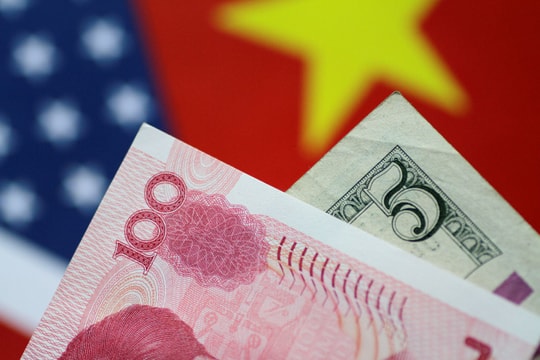The 'plot' to internationalize the yuan is being dragged down by the trade war
The recent decline in the yuan is posing a challenge to Beijing's efforts to promote its currency globally.
China wants its currency to play a leading role in global trade and finance as it gradually expands its economic influence. One of its major achievements was the 2016 addition of the yuan to the International Monetary Fund’s Special Drawing Rights (SDR) basket, alongside major currencies such as the US dollar, euro, Japanese yen and British pound.
But it has also been through some upheavals, most notably in 2015 when authorities abruptly devalued the yuan after pushing it up for years, sparking a sell-off in global financial markets.
Now, the yuan is facing a new challenge, as the Chinese economy is under pressure from US President Donald Trump’s import tariffs. Analysts say China’s process of turning the yuan into a global currency may be being pushed back.
“The internationalization of the yuan may temporarily slow down in the second half of this year” as the trade war disrupts the process, said Ken Cheung, senior foreign exchange strategist for Asia at Mizuho Bank.
Trade tensions have exposed weaknesses in China’s slowing economy, and risks such as bond defaults have worried foreign investors.
More importantly, the yuan’s depreciation began earlier. Trade tensions are not the only reason for this. In a report yesterday, IHS Markit said the yuan weakened against the dollar in the first half of the year as US bond yields rose in line with the Fed’s monetary tightening.
Since peaking at 6.28 yuan per dollar in March, the currency has fallen more than 8% against the US dollar. In the international market today, the exchange rate is around 6.82 yuan per dollar.
However, Mr. Trump's use of import tariffs to address the persistent trade deficit with China has had some impact. Kelvin Lau, a senior economist at Standard Chartered, agrees that the internationalization of the yuan is facing challenges as the currency weakens under the shadow of import tariffs.
“As long as the US-China trade tensions or uncertainties increase, trade between the two countries will decline. That will slow down the internationalization of the yuan, because the currency will be used less in foreign trade transactions,” he explained.
However, Kelvin Lau also believes that the future of the yuan is quite complicated and cannot be concluded based on the US-China situation alone. “China has many ways to open its economy, such as liberalizing the stock and bond markets, or reducing trade barriers,” he said. “I think China is still sticking to the goal of increasing domestic consumption, attracting imports, and opening up the domestic financial sector to the world.”







